The history of red light therapy can be traced back to the early 20th century, when the Danish physician Niels Finsen developed a method to treat skin tuberculosis using concentrated light radiation.
Today, red light therapy is recognized as a promising and versatile therapeutic approach with numerous potential health benefits, and there’s a growing body of evidence supporting its efficacy and safety across various medical disciplines.
Unfortunately, as a result of this growing popularity, the market has become flooded with medicore (or downright useless) red light devices. My goal with this article is to give you the necessary information to choose a high-quality red light device that has the ability to deliver the specific health benefit you’re after.
In general, you should look for a red light device that emits light in the proper wavelengths, strength and dosage.
For example, if you’re trying to treat issues associated with your joints or deep muscle tissue, you need a red light device with high-emissivity lasers or LEDs that emit a fairly narrow light cone to ensure deep tissue penetration. On the other hand, if you’re trying to treat skin issues, a high-quality red light panel or a skincare wand might be your best bet.
Questions to Ask Yourself Before Buying a Red Light Device
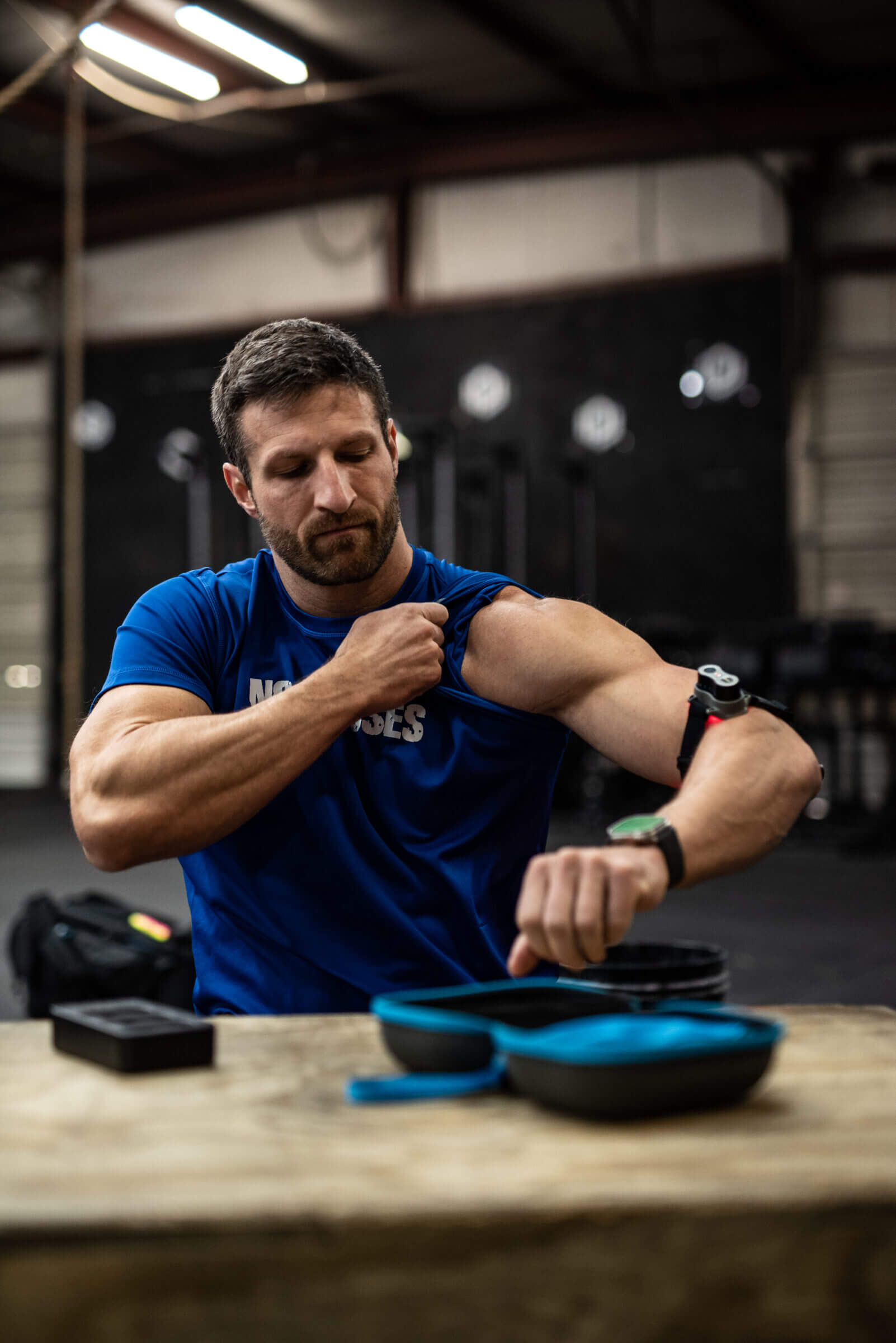
I’ve been using a wide variety of red light devices over the past few years to treat stubborn joint injuries, speed up muscle recovery after intense workouts, positively influence my circadian rhythm, and improve my skin health. As a result, much of what I share in this article is based on both scientific evidence as well as several years of hands-on experience.
When assessing the factors associated with choosing a red light device, I encourage you to ask yourself the following questions:
- What is your budget? The lowest-priced devices I recommend cost less than $200 but are only effective for skincare applications. Devices that treat joint and muscular issues often cost twice as much or more, whereas a full-sized red light panel might cost over $1,000.
- What are you trying to accomplish? Treating an inflammatory condition such as rheumatoid arthritis requires a different type of device (and different dosing) than reducing fine lines and wrinkles. So match the device type to the condition you’re trying to treat.
- How disciplined are you when it comes to using a device? Some devices require that you set aside dedicated time for your treatment protocol, potentially making it less likely that you’ll to use them consistently. Other devices can be worn passively, without negatively impacting your daily routine.
- Do you travel a lot? Some devices come in form factors that are convenient for taking on the road, reducing the chances for travel to interfere with your treatment protocol. Others, like a full-sized red light panel, are too bulky to take with you.
- Do you plan on sharing the device with family members? Devices with longer battery lives reduce the probability of someone running out of battery halfway into their treatment session.
- Are you making the proper lifestyle choices to support your treatment protocol? Many conditions that can be treated using red light therapy are caused by poor lifestyle choices. To achieve optimal results, you might also have to adopt certain lifestyle changes, such as avoiding ultra-processed foods or certain plant-based foods.
Key Factors to Consider When Shopping For a Red Light Device
Based on my hands-on experience with a variety of red light devices, including those my wife and I use regularly, here are the top factors you should take into account before pulling the trigger.
1. Type of Red Light Emitted
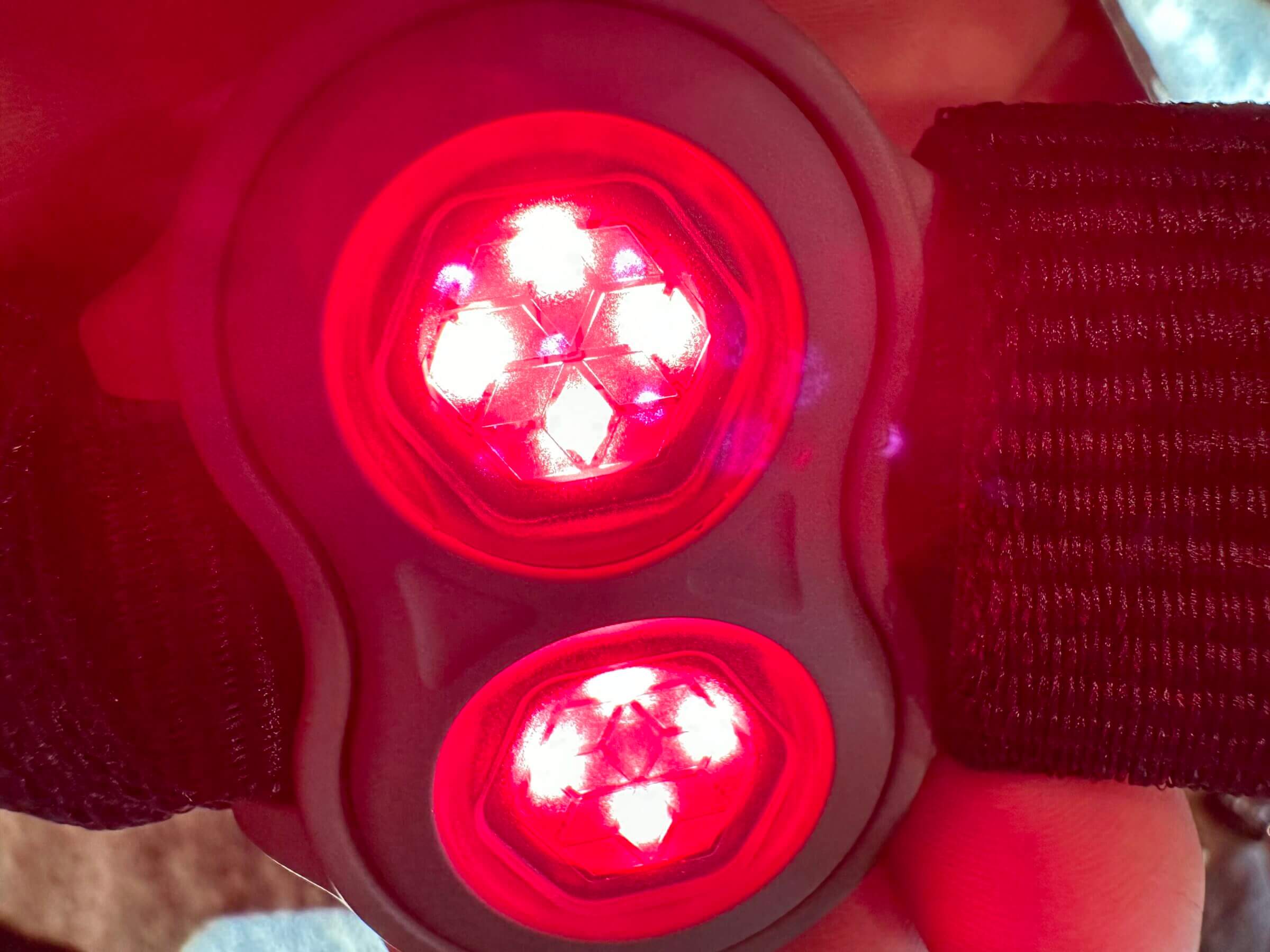
Most of the red light devices I own actually use a combination of red light and near-infrared light for optimal performance.
That’s because each wavelength transports a certain amount of energy into the target tissue at varying depths. For example, red light has a shorter wavelength than near-infrared light, thus transporting more energy but offering less penetration. Combining red and near-infrared light ensures that the cells at various tissue depths receive enough energy from photons to cause downstream effects, such as improved mitochondria function and increased blood flow.
The notable exception is skincare devices (i.e., those aimed at reducing fine lines and wrinkles), which often only emit red light. For example, my wife has been using Solawave, a skincare wand that uses red light-emitting LEDs, to improve the appearance of her skin.
But if your goal is to speed up the healing process after an injury, to treat an inflammatory condition such as arthritis, or to support the regrowth of cartilage tissue, you need a device that emits red and near-infrared light in the appropriate wavelengths and the proper intensity.
Additionally, it’s worth noting that most of the red light devices on the market leverage light-emitting diodes (LEDs) because they’re fairly cheap to manufacture and provide enough power (wattage) to be effective. The potential issue with LEDs is that they also emit a fairly wide cone of light, which can reduce their effectiveness when treating tissue several centimeters below the skin (e.g., larger muscle groups or joints).
That’s why many devices used in the medical field, and a few consumer-grade devices (such as the Kineon Move+ Pro), use a combination of lasers and LEDs.
Lasers emit a relatively narrow light cone, which helps with sending light (photons) at the proper dosage deeper into the target tissue. That’s why I exclusively rely on the Move+ Pro for treating exercise-induced injuries that require deep tissue penetration to speed up the healing process.
However, I might use LED-based devices for general wellness applications, including skin care or sleep optimization.
For example, I use a high-quality red light panel from Mito in the morning to support my circadian rhythm and to make my skin more resilient to UV light. In the evening, I might use a red light mask from Sun Home Saunas to support optimal skin health. And when I have a tight lower back from lifting heavy weights or shoveling dirt in the backyard, I might use a red light therapy belt from Mito.
2. Wavelengths
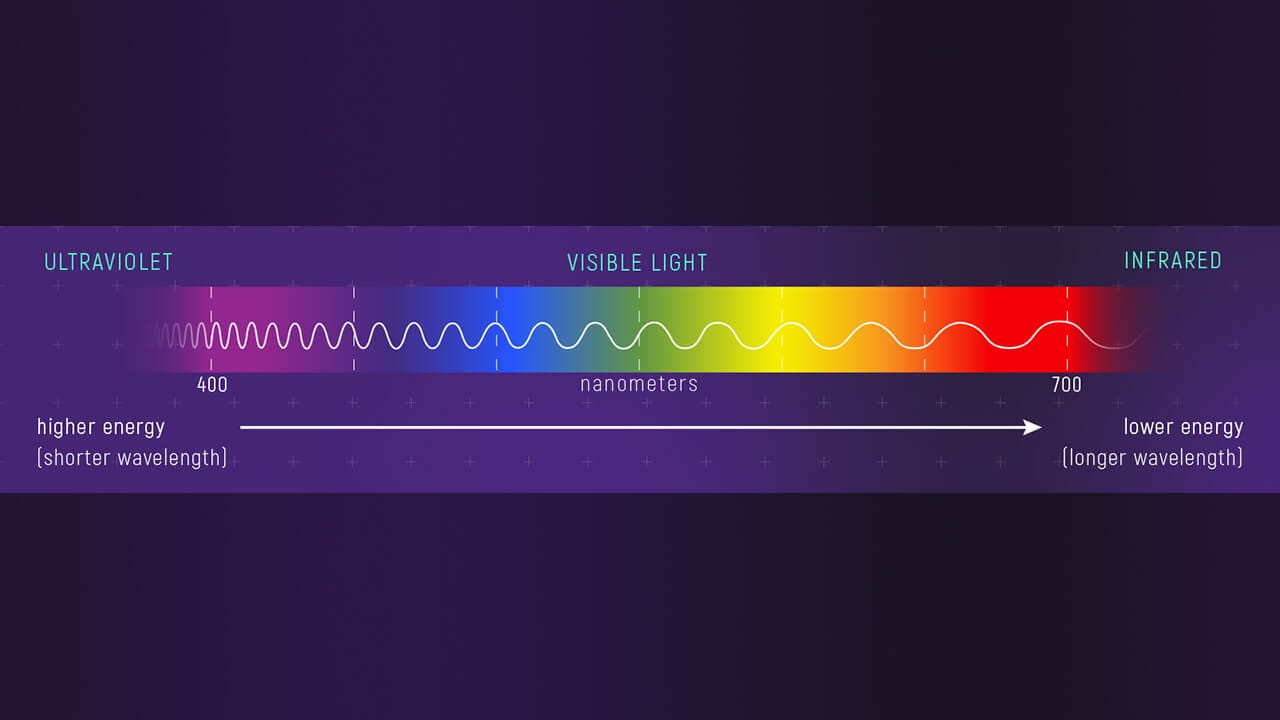
Each wavelength of both the visible and invisible light spectrum carries a certain amount of energy, which determines how the cells in your body react to it.
As a rule of thumb, shorter wavelengths carry more energy but penetrate tissue less deeply, while longer wavelengths carry less energy but better penetrate tissue at greater depths.
That’s why it’s important to pick a device that emits the proper wavelengths based on the desired health benefits and the type of tissue you’re trying to treat.
For example, using a device that emits only wavelengths in the red light spectrum won’t be effective for treating joints or deep muscle issues because it doesn’t penetrate deep enough.
The other factor to consider is that not all cells in the body have the same photoreceptors. In other words, the cells in your skin may respond differently to certain wavelengths than those in your muscle or joint tissue.
Fortunately, scientists have been experimenting with red and near-infrared light for decades, resulting in a comprehensive database of how specific wavelengths benefit certain use cases.
The only problem is that there doesn’t appear to be a single wavelength that works best for all use cases, which is why most manufacturers of red light devices use LEDs that emit a combination of wavelengths.
For reference, these are the most effective wavelengths for common treatment areas:
- Joint and deep tissue repair: 620 – 650 nm (red), 808 – 830 nm (IR).
- General wellness (e.g., skincare): 620 – 660 nm (red), 830 – 850 nm (IR).
I recommend looking for red light devices that emit light in some of the wavelengths listed above.
3. Light Intensity
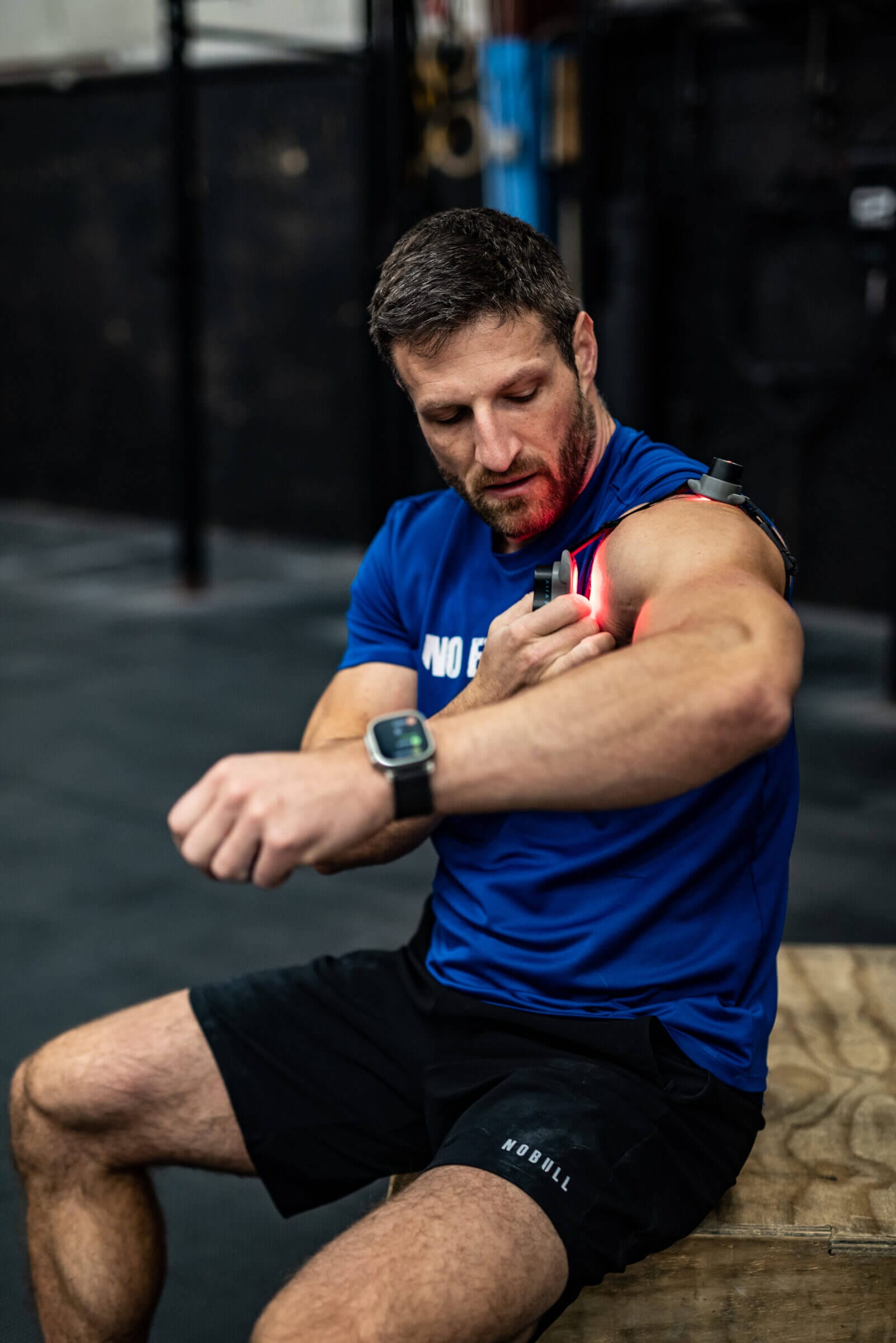
One of the most important factors that determines the effectiveness of any red light device is how much of the emitted light (in the form of photons) reaches the target tissue.
In the realm of infrared light, the term “emissivity” is often used to describe how effectively the device’s LEDs can emit thermal radiation. In the realm of red light, the term “irradiance” is typically used to describe how much of the emitted energy is received by the surface of the skin.
Depending on what you’re trying to accomplish with your red light device (i.e., what tissue you want to treat), your device must feature an appropriate irradiance expressed in milliwatts per square centimeter (mW/cm²). This is also known as optical power density.
Note that most manufacturers (except infrared sauna brands) only publish irradiance statistics, because that’s what ultimately matters. If you can guarantee that a certain amount of light is hitting the target skin, it doesn’t matter how good the heaters are at emitting light; the latter influences the former, but there is no need to keep track of both since only the end result is important. Hence, you won’t typically see an emissivity figure on a red light device’s documentation.
Here are some examples of effective devices we use at the Kummer household and their optical power density (irradiance) ratings (the links below point to my review of each device):
- Kineon Move+ Pro: 250 mW/cm² per module, 750 in total mW/cm². A red light device that uses a combination of 10 near-infrared lasers and eight red LEDs to help treat joint pain, muscle aches, skin issues and injuries.
- MitoPro 1500: 170 mW/cm². A red light therapy panel I use in the morning to support my circadian rhythm and improve my skin health.
- Sun Home Saunas Radiant Face Mask: 30 to 55 mW/cm². An LED face mask that emits red, deep-red, amber, near-infrared and blue light frequencies to support skin health and treat common skin conditions.
- Solawave: 40 to 45 mW/cm². A skincare wand my wife has been using for years to improve the elasticity of her skin.
As you can see, you don’t need high irradiance to improve the health and appearance of your skin. However, the deeper you need the red and infrared light to penetrate your tissue, the more light intensity is required.
Another important factor when talking about light intensity is the difference between pulsed light versus continuous light.
High-end devices, such as the Move+ Pro, use pulsed light to output higher energy levels without causing tissue damage. Devices that leverage continuous light have to operate at lower energy levels. And while that’s fine for treating skin issues, that lower-intensity light isn’t strong enough to penetrate joints or muscle tissue at effective depths.
Conversely, pulsed light devices are also effective for treating skin issues. So, if you have multiple use cases, I recommend getting a pulsed light device, such as the Move+ Pro.
And yes, the number of LEDs a device has plays a role in the total wattage. However, it doesn’t impact the milliwattage per square centimeter, which is the metric that matters most when determining optical power density.
4. Dosing
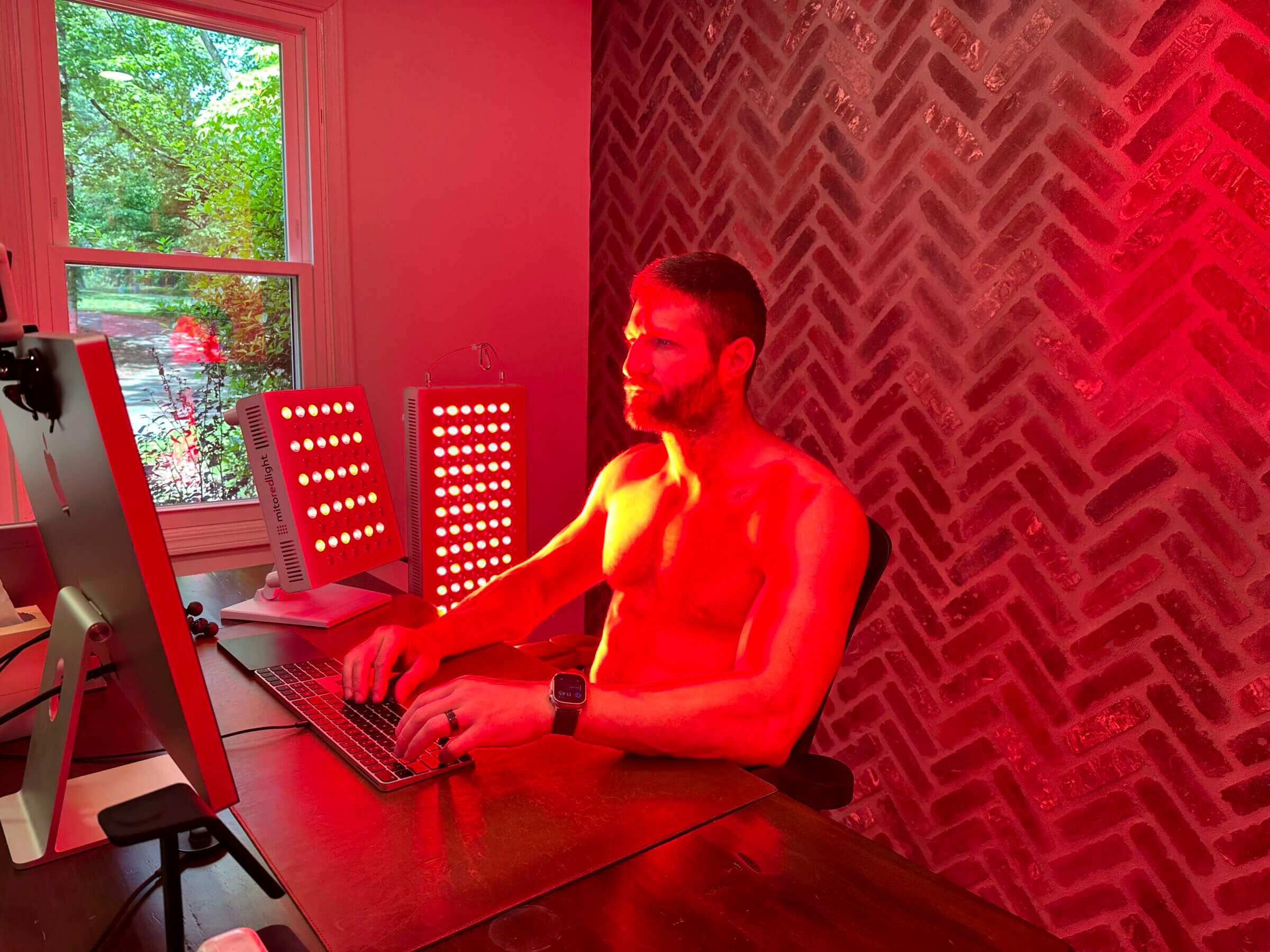
Distance is a crucial factor for determining effective light dosing because it influences how much energy the target tissue receives. For example, a red light device that delivers light in an effective dosage when in close contact with the skin (the target tissue) might be 100% ineffective when held five inches away from the skin.
Because of this, you want to look for red light devices that emit the right wavelengths at the right light intensity to achieve the desired results while making it feasible to maintain a consistent distance between the light source and the target tissue.
That’s why I prefer wearable devices over red light panels when treating injuries or pain. Using a wearable, I can maintain the appropriate distance between the light source and the target tissue (e.g., my lower back).
In fact, red light devices are typically most effective when they’re in direct contact with your skin. For example, placing the Kineon Move+ Pro a few inches away from an injured joint would render the device ineffective.
That’s one of the reasons why it’s difficult to get the dosing right with red light therapy panels, unless you lie down and leverage a horizontal stand to position the panel right above your skin.
Some of the devices listed above — including the Kineon Move+ Pro, the Radiant Face Mask from Sun Home Saunas, and the Solawave — meet all those requirements. In contrast, Mito’s red light panels put the burden of maintaining a consistent distance to its LEDs on you, especially if you want to use the panels for treating tissue below the surface of the skin.
5. Target Treatment Area
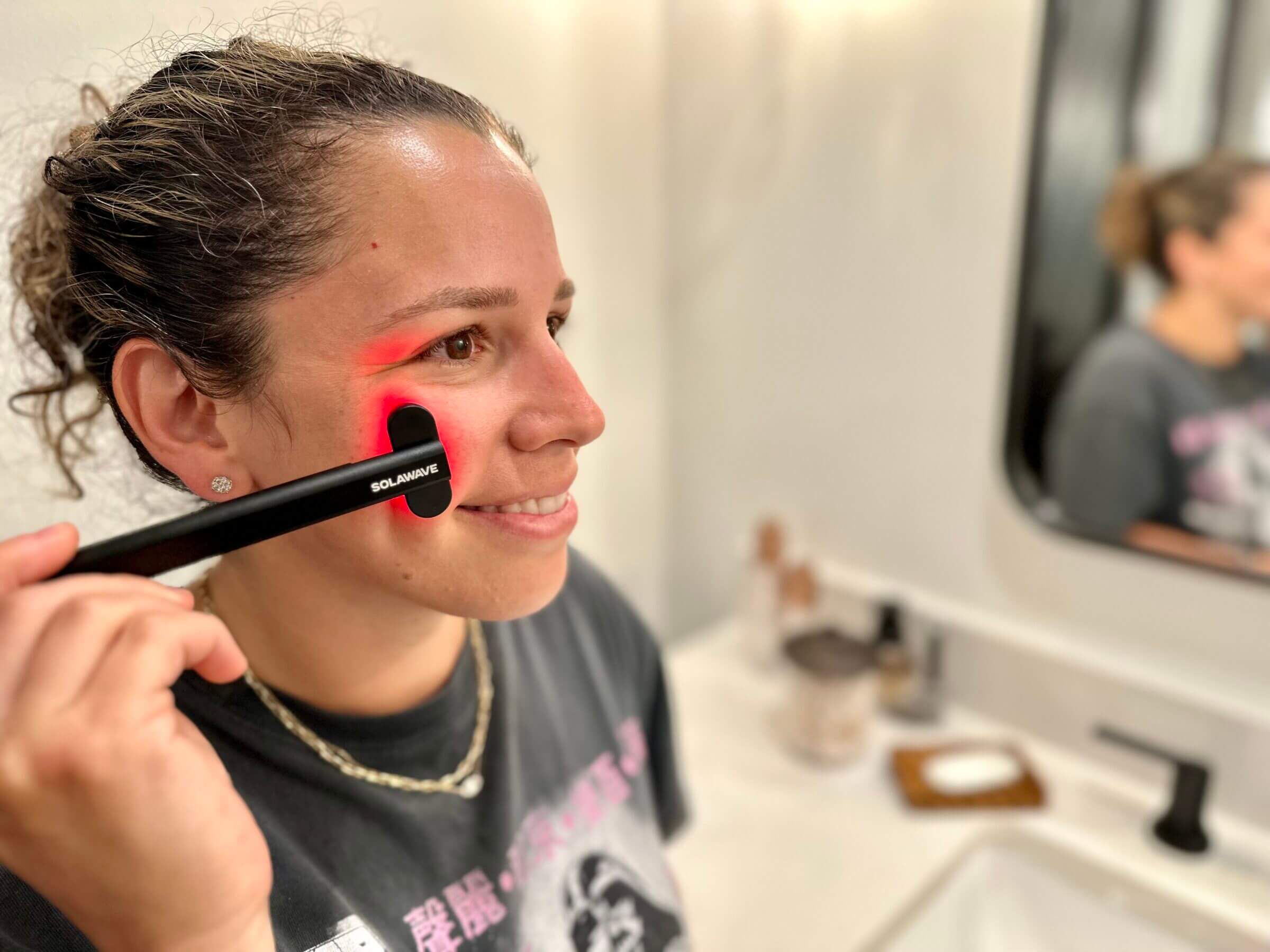
In addition to the effectiveness of a particular device for treating a specific area, you also need to consider the practicality.
For example, you wouldn’t want to use Solawave for whole-body skincare treatments despite the device’s effectiveness in treating skin issues, because each whole-body session would take you several hours. In other words, the surface area emitting the red light is simply too small for treating larger areas.
As a rule of thumb, the larger the treatment area is, the more I lean towards using red light devices with a large emission area. For example, if my whole body aches after an intense workout, I jump into our full-spectrum infrared sauna with red light instead of using wearables.
For back pain, I might use a red light belt or a red light panel (while maintaining a close distance to the light source). If I’m suffering from knee pain or a strained muscle, I use a specialized wearable such as the Kineon Move+ Pro.
Of course, I always aim to use a device that has been proven to be effective for treating a certain area. In other words, I don’t recommend relying on a regular red light panel to treat worn-out cartilage tissue in your knee joints, because the light won’t be able to penetrate your knee capsule. Instead, you have to work with a high-quality wearable with the right dosing protocol for such cases.
Here are some examples of devices I use for a variety of use cases:
- Joint and deep muscle issues: Kineon Move+ Pro.
- Whole body treatments: Sunlighten mPulse full-spectrum infrared sauna with red light, or the MitoPro 1500 red light therapy panel.
- Skin treatments (targeted): Sun Home Saunas Radiant Face Mark, Solawave (mostly used by my wife).
- Lower back: Kineon Move+ Pro, Mito Red Light Belt.
- System treatments (e.g., circadian rhythm): MitoPro 1500 red light panel.
As you can see, no device works great for every use case, but some devices can handle multiple treatment areas.
6. Ease of Use
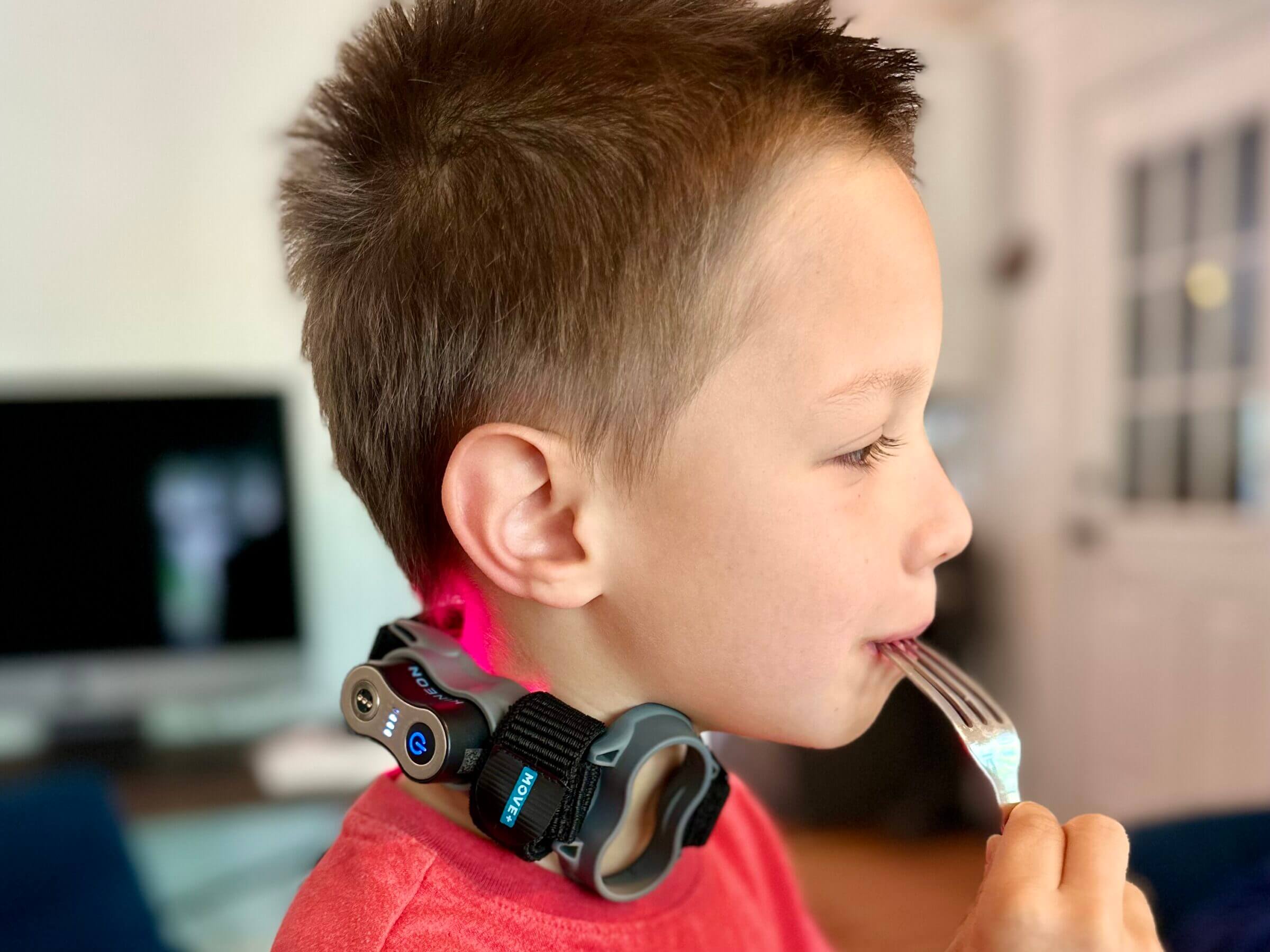
Red light therapy is most effective when leveraged consistently over the course of several weeks or months, depending on the underlying condition you’re treating. That’s why it’s important to choose a device that’s easy to use and that doesn’t get in your way or disrupt your daily routine.
If using a red light device feels inconvenient, you will probably stop using it before you can reap its benefits.
That’s why I prefer devices that I can use passively (like a wearable I can use while working on my computer or watching TV), or which require minimal time investment.
For example, when I get into my office in the morning, I take off my shirt and expose my upper body to red light using a red light panel from Mito without having to stop or disrupt my work.
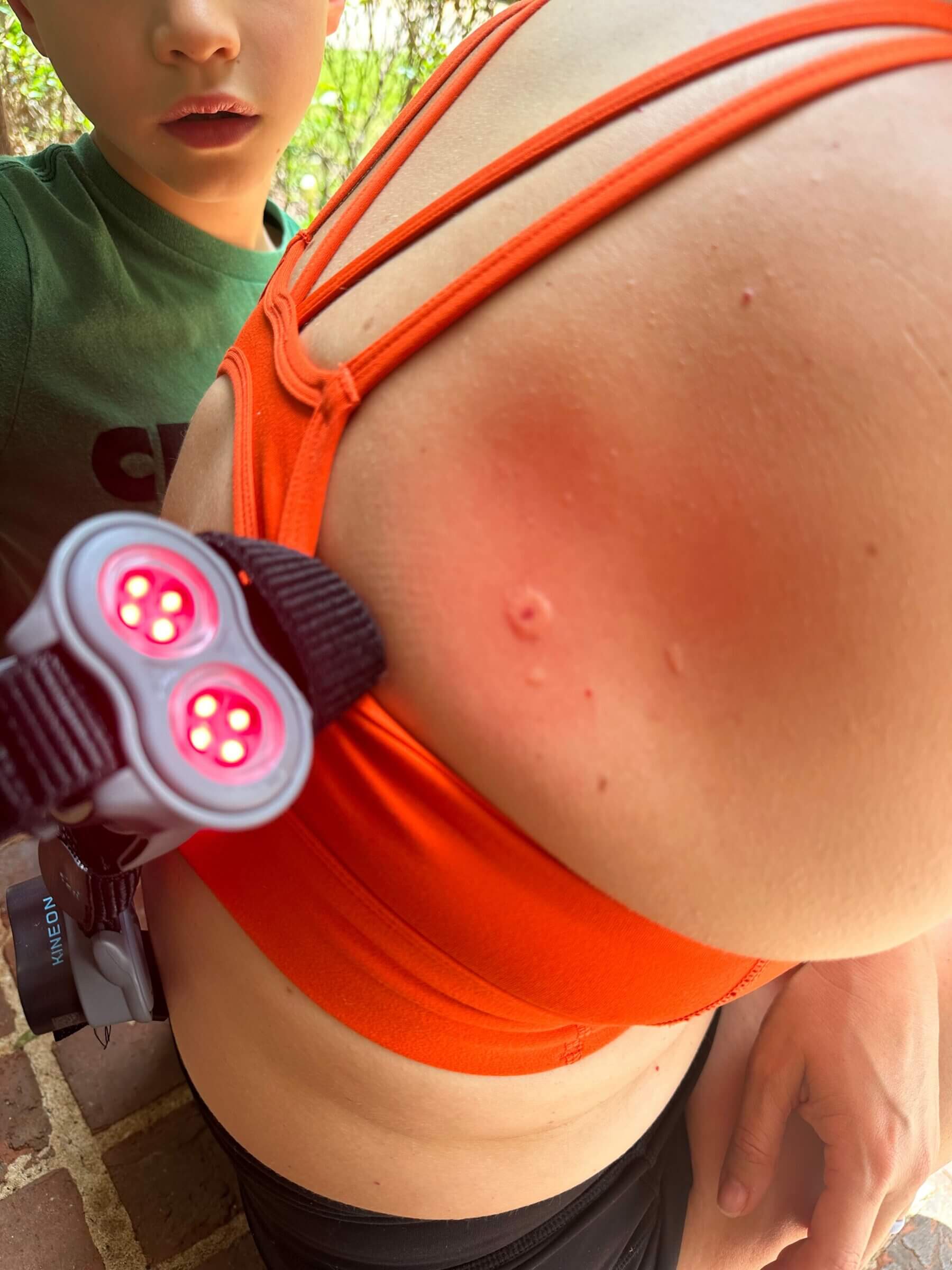
The same principle applies to the Kineon Move+ Pro that my wife and I use for treating injuries and bee stings (we’re beekeepers and get stung several times a year), and speeding up muscle recovery after intense workouts. Thanks to its flexible straps, we can wear the Move+ Pro while having dinner, watching TV or working on the computer.
Conversely, there are some red light devices on the market that require a more proactive treatment approach. For example, the Solio Alfa+ is incredibly effective for treating muscle pain, but it requires you or someone else to rub the device in circles over the affected area for up to 20 minutes. While that’s not a big deal if you suffer from a severe injury, it’s an inconvenience that might lead some users to abandon the treatment after a couple of days.
The bottom line is that the easier a red light device is to use, the more likely you’ll be to stick with the recommended treatment protocol. That’s especially true for complex injuries that may take several months to treat.
7. Additional Features
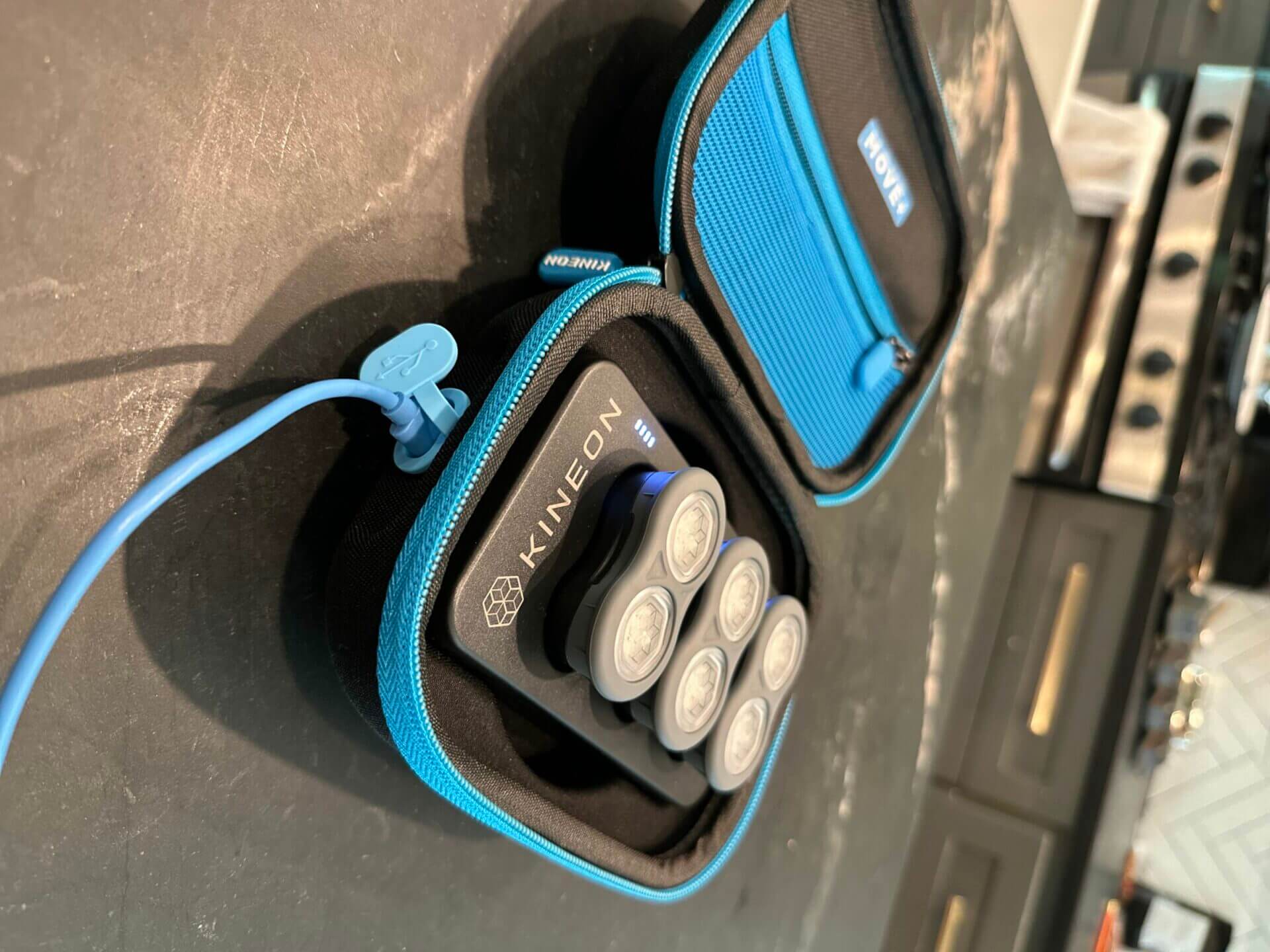

While I recommend spending your money on devices that emit high-quality light in the proper wavelengths and intensity, some offer additional features that are nice to have.
For example, the Kineon Move+ Pro has a travel pouch that doubles as a charging station. In other words, you can charge the individual light modules of the Move+ Pro without having to take the device out of its case.
That’s not only convenient when you take the Move+ Pro on the road with you, but it also reduces countertop clutter when you charge the device at home.
Another example of a nice-to-have feature is the ability of the Sun Home Saunas Radiant Face Mask to emit blue light to treat blemishes and fight against acne-causing bacteria. I’m a proponent of fixing inflammatory skin conditions with the proper dietary changes, but having blue light to support the healing process is a plus.
I recommend spending extra money on additional features only if you think they’ll help you use the red light device more consistently. Otherwise, don’t get too hung up on them.
8. Brand Reputation
Before I commit to spending hundreds or thousands of dollars on a new gadget, I always research the brand I’ll be buying from. Many manufacturers of red light devices (especially those sold on Amazon) have no expertise with red light therapy. Instead, they simply resell or white-label devices manufactured in China, because they’ve realized how big the red light device market is.
I prefer purchasing from brands that focus on red light therapy and have the necessary expertise and desire to manufacture effective products (that they use themselves).
For example, I know the owners of most of the brands I work with, and I have a reasonable understanding of how they operate. We’re good friends with Forrest Smith, who co-founded Kineon, and I know how much passion and resources go into making the Move+ Pro one of the most effective red light devices on the market.
While you might not be able to befriend the creators of your chosen red light device, I encourage you to investigate their story, reach out to ask questions, and read reviews from other customers.
If I don’t know the brand I’d like to purchase from, I often google for terms like “[brand] scam” to see if there have been any reports of other customers who got scammed or taken advantage of.
What to Avoid When Buying a Red Light Device
Unfortunately, the market is flooded with ineffective red light devices. Here are some of the red flags you should look out for before pulling the trigger:
- Spelling or grammatical errors in the product description. If the company in question hasn’t even bothered to invest in hiring a copyeditor to look over their marketing materials, I would never trust them to produce a device aimed at treating injuries or other ailments.
- Missing information about the wavelengths, irradiance or light intensity. This information is important for determining how effective a device will be in any given situation, and serious manufacturers will always make it easy to find.
- Poor battery life. If you opt for a battery-powered device, make sure it lasts for at least several sessions before you have to recharge it. Getting ready for a treatment session just to discover that your device is dead causes frustration and increases the likelihood of abandoning the treatment. For reference, the batteries of the Kineon Move+ last for 24 ten-minute sessions before you have to recharge them.
- If you choose a wearable red light device, make sure the device feels comfortable, even when worn over extended periods. If the device is difficult to adjust, itches, or pinches, you’re much more likely to stop using it.
Additionally, make sure your device comes with a limited money-back guarantee so you can test its effectiveness. While some treatments may take several weeks or months (longer than the return window most manufacturers offer), you should be able to get a good feel for whether the device is right for you within the first 30 days.
Common Questions About Choosing a Red Light Device
In the past, most medical-grade red light devices used lasers, or a combination of lasers and LEDs, to ensure effectiveness. Those devices were often also much more powerful than at-home devices. However, that’s no longer the case; consumers can now purchase medical-grade red light devices, such as the Kineon Move+ Pro (which features four high-end LEDs or LED/laser combinations and pulsed light technology).
However, there are still many ineffective devices on the market that use cheap LEDs with constant light technology that don’t emit enough power to be truly effective. That’s why it’s important to consider the information in this article when making a purchasing decision.
As of this writing, there is no FDA approval process for consumer-grade red light devices because the FDA doesn’t consider them medical devices. As a result, manufacturers can only register their red light devices with the FDA, a formal process to confirm the product in question is similar to legally available products and offers a comparable level of risk.
FDA-registered products are often marketed as “FDA listed” or “FDA cleared.”
Personally, I think FDA registration is more of a marketing gimmick than anything else, because it doesn’t in any way indicate whether a device is effective. However, it does indicate that the red light device probably won’t harm you.
I’d argue that devices that rely on pulsed light are more effective for certain treatment modalities than those relying on continuous light because the former can operate at higher light intensities to deeply penetrate tissue without causing damage.
In other words, you can leverage red light devices that use continuous light for treatments where penetration depth isn’t a significant factor (e.g., treating blemishes, fine lines or wrinkles).
For treating joints or deep muscle tissue, I recommend red light devices with pulsed light to ensure proper penetration depth. With regard to the former, you can read my article on using red light for joint pain to get more details on that specific use case.
Like all electronic devices, red light devices emit EMFs, albeit in relatively low doses.
Considering that your exposure to EMFs from red light devices is limited to the treatment session, I don’t consider that a problem. In other words, the benefits of red light therapy usually outweigh the potential risks of EMF exposure.
In fact, one of the potential issues with EMF exposure is tissue warming (one of the reasons why I recommend using wired headphones when making phone calls instead of holding the mobile phone next to your ear and brain). In the context of red light therapy, targeted tissue warming is a desired effect because it increases blood flow to the target area.
The bottom line is that I wouldn’t wear a red light helmet for eight hours per day, but I have no concerns with using a red light device such as the Kineon Move+ Pro on my shoulder for 15 minutes daily.
Final Thoughts: Take the Time to Find the Right Device For Your Specific Goals
Red light therapy has become a ubiquitous treatment modality for various health concerns ranging from improving mental health, facilitating hair growth, treating joint pain, speeding up recovery after intense workouts and treating cosmetic skin issues. It’s even been shown to positively influence athletic performance.
As a result, the market for red light devices has exploded over the past few years. Unfortunately, I’ve seen many cheap and ineffective devices being promoted online. That’s why it’s important to understand what factors influence the effectiveness of red light devices for various use cases, including dosing, wavelengths and light intensity.
I hope by reading this article, you’ve equipped yourself with the necessary knowledge to make the right purchasing decision. However, if you have any questions about a device you’re interested in or would like to get my take on it, leave me a comment below.
You can also check out my list of the best red light therapy devices, which is based largely on my first-hand experience trying many different products over the years.

Michael Kummer is a healthy living enthusiast and CrossFit athlete whose goal is to help people achieve optimal health by bridging the gap between ancestral living and the demands of modern society.
Medical Disclaimer
The information shared on this blog is for educational purposes only, is not a substitute for the advice of medical doctors or registered dieticians (which we are not) and should not be used to prevent, diagnose, or treat any condition. Consult with a physician before starting a fitness regimen, adding supplements to your diet, or making other changes that may affect your medications, treatment plan or overall health. MichaelKummer.com and its owner MK Media Group, LLC are not liable for how you use and implement the information shared here, which is based on the opinions of the authors formed after engaging in personal use and research. We recommend products, services, or programs and are sometimes compensated for doing so as affiliates. Please read our Terms and Conditions for further information, including our privacy policy.